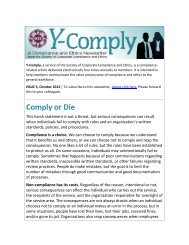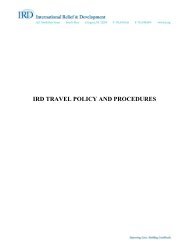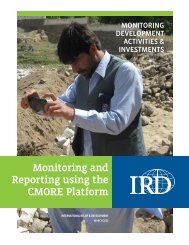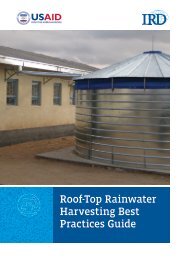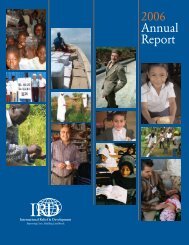Empowering citizens Engaging governments Rebuilding communities
Empowering citizens Engaging governments Rebuilding communities
Empowering citizens Engaging governments Rebuilding communities
You also want an ePaper? Increase the reach of your titles
YUMPU automatically turns print PDFs into web optimized ePapers that Google loves.
As planning for CSP unfolded, the security<br />
situation in Iraq worsened, including the<br />
deadly bombing of the al-Askari Mosque<br />
in Samarra in February 2006. USAID<br />
had to move quickly, and it needed an<br />
experienced implementation partner<br />
2<br />
A complete stabilization package<br />
a new voice in the administration, Peter D. Feaver,” a<br />
special adviser to the National Security Council and a<br />
political scientist who had studied and written extensively<br />
on civilian-military relations. The US government<br />
recognized its objectives could not be accomplished<br />
through security interventions alone.<br />
Shortly thereafter, USAID released its Iraq Transition<br />
Strategy Plan (2006–08), which outlined three objectives<br />
in support of the administration’s security-political-economic<br />
delineation. The first of these objectives<br />
called for the “stabilization of strategic cities and the<br />
improvement of local <strong>governments</strong>’ ability to provide<br />
services” through short- and long-term job creation<br />
programs and through close working association with<br />
provincial councils. “Linking stability with development<br />
will reduce incentives for violence and integrate<br />
key cities into longer term development initiatives,”<br />
the plan stated. Out of this strategy, CSP was born<br />
(box 4).<br />
From the beginning, CSP differed from most international<br />
development programs and particularly from<br />
USAID programs. The scope of work said that: “Rather<br />
than focusing on traditional long-term sustainable<br />
development, CSP is a short-term COIN program”<br />
with a concentration on “employing or engaging mass<br />
numbers of at-risk, unemployed males.” Designed to<br />
be run “in close coordination with the [US] military,<br />
provincial reconstruction teams, and with local civilian<br />
counterparts,” CSP brought into one program the US<br />
government’s most comprehensive postwar strategy<br />
plan to date, as well as the military’s emerging<br />
outlook on civ-mil partnerships for carrying out COIN<br />
strategies.<br />
In January 2007, the president announced the<br />
stabilization plan during an internationally televised<br />
address, detailing how the embedded PRTs would<br />
place development experts inside brigade combat<br />
teams, the “civilian surge” to accompany the military<br />
surge of 20,000 troops. Initially, there was a struggle<br />
within the administration as to which department or<br />
agency would take the lead in civilian-led stabilization<br />
and reconstruction. Should it be housed at the<br />
Pentagon? Implementation cells could be placed<br />
within the combatant command responsible for Iraq,<br />
but concern was expressed over how much flexibility<br />
the civilian workers would have. Should it be housed<br />
at the State Department? At the time, the department<br />
did not have any scalable programmatic capability for<br />
stabilization—the Civilian Response Corps was still a<br />
few years away. But some high-ranking State Department<br />
officials pushed for it, arguing that the department<br />
was already overseeing democracy building and<br />
programs for internally displaced persons, and that<br />
those programs could be transitioned into stabilization<br />
activities.<br />
USAID, without a Cabinet-level voice, lacked the influence<br />
of other departments, but its mission practices<br />
offered an obvious alignment with CSP’s programming<br />
requirements. Not everyone in the administration<br />
agreed, of course. But after prolonged discussion,<br />
administration officials decided to house the program<br />
at USAID. “The reconstruction activities that were put<br />
forward for USAID to implement focused on the areas<br />
where the government believed it could get the best<br />
goodwill from Iraqi <strong>citizens</strong>, the best places where<br />
we could engage Iraqis in a constructive manner so<br />
they’re not taking up arms,” explained a senior IRD<br />
official.<br />
In the context of government decisionmaking, CSP<br />
was moving forward rapidly, despite the jockeying for<br />
oversight. Momentum for focused stabilization had<br />
been building, but as early planning for CSP unfolded,<br />
the security situation in Iraq worsened. The al-Askari<br />
Mosque bombing in Samarra in February 2006 led to<br />
an estimated 1,300 deaths, ignited ethnic tensions,<br />
and plunged Iraq into a spiral of violence. USAID had<br />
to move quickly, and it needed an implementation<br />
24


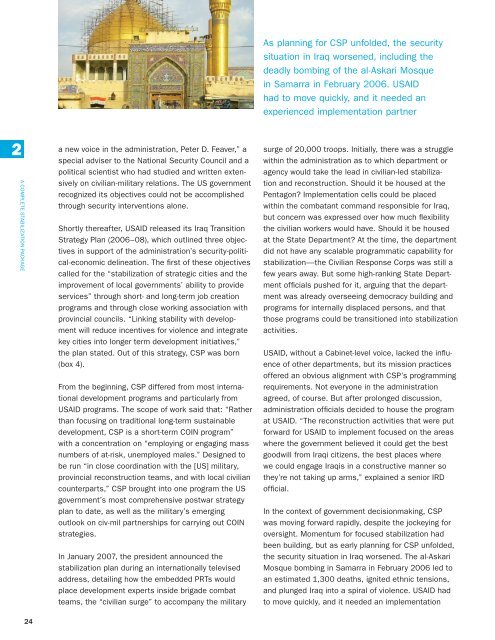
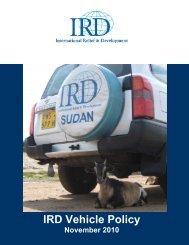
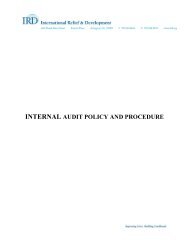
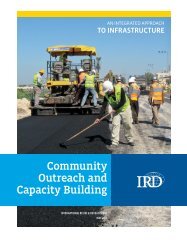
![Guide bonne pratique production d'oignon qualité_VF_4_2411012[1]](https://img.yumpu.com/23506639/1/184x260/guide-bonne-pratique-production-doignon-qualitac-vf-4-24110121.jpg?quality=85)

